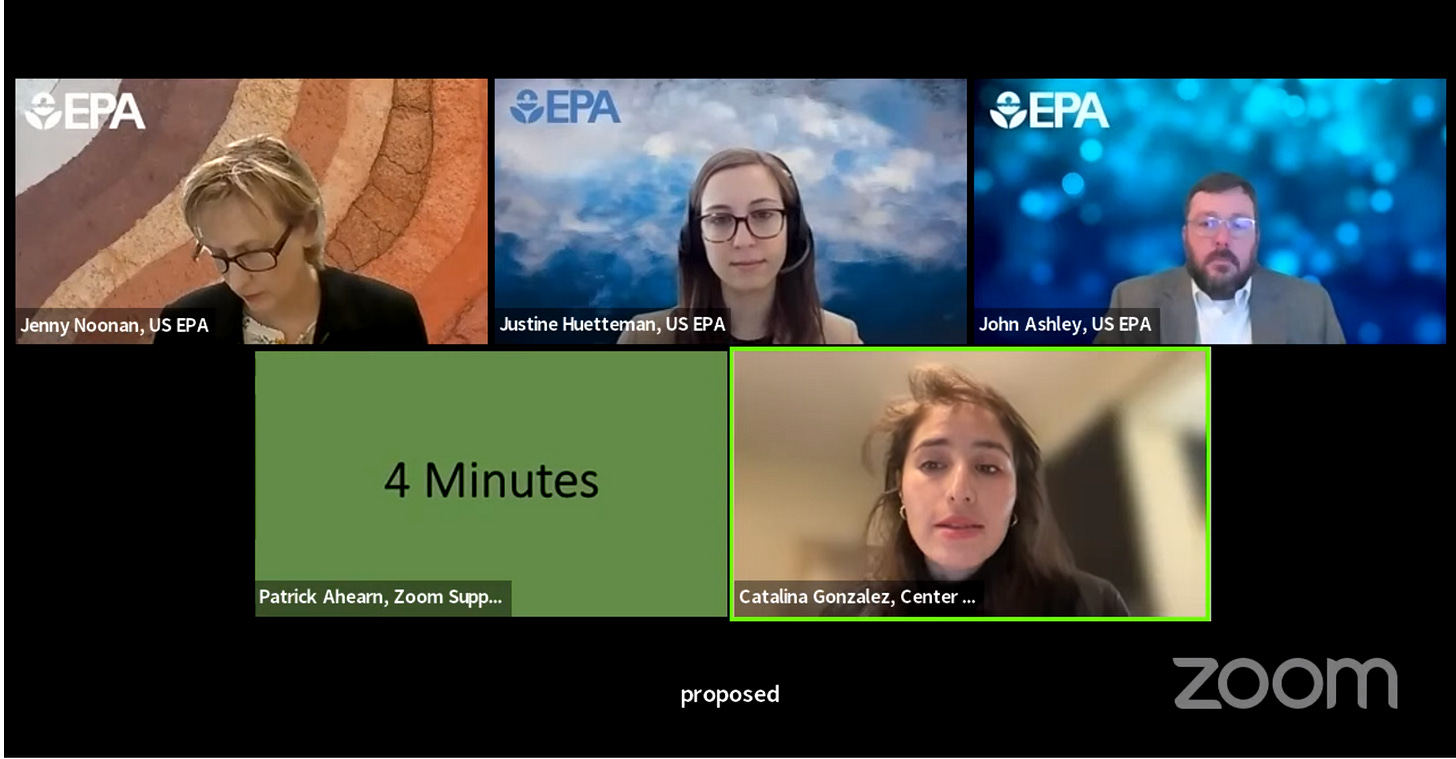EPA hearings on proposed carbon pollution standards: Day 2 had a sprinkling of sanity
The official title is "EPA's Proposed Carbon Pollution Standards for Fossil Fuel-Fired Power Plants"
Day 2 of the EPA hearings titled “Proposed Carbon Pollution Standards for Fossil Fuel-Fired Power Plants” was slightly better than Day 1 because two speakers brought some sanity to the testimony. Note that the title of the EPA proposed rules calls carbon dioxide “carbon pollution,” so you know what the rules are all about.
I listened and took notes on almost every testimony for the first two days of the hearings. It was obvious that they were all following a script that told them what points to make. The outline of almost every testimony supporting the proposed rules was as follows:
Climate change is killing us with a personal story that proves it, such as asthma, allergies, more ticks (really), too much rain, etc.
The recent Canadian forest fires are proof that climate change is worsening.
Power plants are responsible for 25% of all CO2 emissions in the U.S., so fossil fuels must be eliminated from power generation to stop climate change. This should start in early 2024. As EPA proposes, phasing in rules over 15 years is unacceptable.
Carbon capture and burning hydrogen are unproven technologies and should not be part of the EPA's proposed rules.
Thank you, EPA, for protecting us from evil fossil fuels and climate change.
Day 1 was essentially an EPA lovefest. The only criticism of the proposed EPA rules was the unanimous disapproval of carbon capture and storage (CCS) and hydrogen. The testifiers were unanimous that they do not want CO2, which is considered to be dangerous pollution, to be captured, moved through pipelines, and pumped into the ground. The anti-fossil fuel testifiers consider hydrogen dangerous and a climate-warming gas when leaked. It will be interesting to see if EPA modifies its rules to de-emphasize CCS and hydrogen.
In my Substack writeup about Day 1, I observed that not a single speaker mentioned that:
China emits three times the carbon dioxide as the U.S., and the EPA rule does nothing to address the global nature of CO2.
Closing coal and natural gas power plants might cause blackouts.
I am happy to report that two speakers on Day 2 addressed both of these points. The two speakers that did so were Michelle Bloodworth, President and CEO of America’s Power, and Bruce Stevens, with the Consulting firm Resources Services LLC in Indiana.
Michelle Bloodworth’s presentation made the following points (based on my notes, not her explicit statements):
EPA is not providing enough time to properly analyze these proposed regulations that will have massive impacts on the US power grid. Providing the public only 15 days to study the effects of rules that will completely change the U.S. power sector is not acceptable.
These proposed rules will force the coal fleet to be dangerously reduced with no plan on what will replace it. The EPA model assumes that all retiring coal plants will be replaced, which is not necessarily true.
These rules completely re-engineered America’s power grid without any real-world consideration of what will replace it.
These rules will increase the odds of electricity shortages
100,000 MW of coal-fired power generation are at risk for early retirement as a result of this rule
The US coal fleet is only half the size of the new coal fleet that China is building to add to its existing coal fleet.
Bruce Stevens, with the consulting firm Resources Services, LLC in Indiana, also delivered excellent remarks, making the following points:
EPA proposed rules limits on existing coal plants need significant modifications:
Carbon capture and storage is not a viable alternative today. It does not exist at scale today, yet the EPA plan mandates a 40% carbon capture rate by 2040. That is not likely to be possible.
The proposed EPA rules will require the construction of gas turbines to be built on existing coal-fueled power plants, which is not feasible, and EPA cannot require offsite CCS either.
EPA proposed rules would require the early closure of coal power plants, and their replacement with gas turbines will cause very high costs for electricity consumers because they will have to pay for the new power plants plus the unrecovered costs of the closed power plants.
While EPA has presented lofty statistics about how these rules will reduce greenhouse gas emissions, it cannot be true because greenhouse gas emissions are a global issue. China burns around 4 billion tons of coal annually, India burns 1 billion tons, and the US burns only 700 million tons annually, a tiny percentage of coal burned annually in the world. The EPA rules will have no meaningful impact on global CO2 emissions.
Without global restrictions on carbon dioxide emissions, this EPA rule will be all economic pain with no meaningful gain in the worldwide reduction of carbon. It will cause utilities to make quick decisions on their fuel mix, leading to significant job losses and increased electricity costs.
The comments by Michelle Bloodworth and Bruce Stevens were right on target, but it is doubtful that they will result in any meaningful changes to the proposed EPA rules. These rules were written by career EPA analysts who have little or no real-world experience in collaboration with anti-fossil fuels NGOs.
The best hope is that the Supreme Court will strike down these EPA rules as invalid because Congress did not explicitly authorize them, consistent with their 2016 ruling on the Obama Clean Power Plan.




